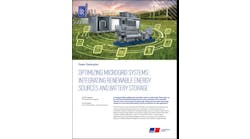Credit: ESA/Hubble
We tend to describe microgrids as a way to keep the lights on when storms strike. But increasingly microgrids, especially community microgrids, are becoming central to a larger economic and sociological shift to local energy.
The trend could be world-changing, but it certainly will be industry-changing, especially for a company like Alstom, which has its equipment connected to two-thirds of the power flow in the United States.
Alstom expects big things to come from microgrids, nothing short of a transformation in the “macro economic model” for the world, says Jayant Kumar, Alstom’s global smart grid program director.
He foresees the power grid eventually becoming a “constellation of microgrids.”
“Essentially we are headed for a world of tomorrow where the paradigm of energy delivery is changing; it is changing significantly. Generating assets are going to be owned by different stakeholders,” he said in an interview.
But the constellation will be built one star at a time. And one of the stars to watch is a community microgrid being developed at The Navy Yard, a 1,200-acre commercial and industrial complex in Philadelphia.
Alstom is researching and designing the community microgrid system in partnership with the Philadelphia Water Department and PIDC, Philadelphia’s public-private economic development corporation. The project has won a $1.2 million grant from the Department of Energy.
The Navy Yard’s microgrid will be interesting for several reasons, not the least of which is the size of the community it will serve. The facility now encompasses more than 140 buildings, covers 6.5 million square feet and serves more than 10,000 people. Undertaking an expansion, it will eventually more than double its size and serve 30,000 people, including 1,500 new residences.
The facility already houses commercial operations, research and development and industry that demands sophisticated energy delivery, among them the Navy, shipper builder Aker and a data center for Urban Outfitters.
These companies receive their power in an unconventional way, one that paves the way for the evolution of a microgrid. The Navy Yard is not captive to a utilty, but operates as an independent, unregulated distribution grid. This spares the facility from dealing with utility franchise rules, which can sometimes thwart microgrid development.
PDIC, which operates the facility, has been undertaking a $31 million upgrade of the grid. The facility is gearing up for a doubling and possible tripling of its 25-MW peak demand. Part of the larger upgrade, the microgrid is being designed to lower carbon dioxide improve energy efficiency. It will include 6 MW of combined heat and power, over 1 MW of solar/storage and 2 MW of demand response.
Alstom is undertaking a two-year design and test of a microgrid controller prototype at the facility. The controller will be used for islanding, synchronization and reconnection, protection, voltage frequency, power quality management and system resiliency for. Others on the team include Pacific Northwest National Laboratory (California Institute of Energy and Environment and Washington State University. The PJM Interconnect and local utility PECO are serving as advisors.
Elsewhere, Alstom also recently announced that will collaborate on the design, development and deployment of a microgrid as part of the Singapore Renewable Energy Integration Demonstrator – Singapore (REIDS) initiative.
REIDS is studying microgrids to manage and integrate electricity generated from multiple sources including solar, wind, tidal, diesel, as well as energy storage and power-to-gas solutions.
With Singapore’s Nanyang Technological University, Alstom will develop microgrid technology to manage power exchanges when the microgrid is connected to the main grid or or separated from it. NTU will install the system at its EcoCampus and later on the Semakau Landfill, an offshore landfill between the islands Pulau Semakau and Pulau Sakeng, located south of the main island of Singapore.
Kumar says that changing forces worldwide are driving development of community microgrids like these. A need for reliable energy, a concentrated drive toward urbanization, and the need to reduce greenhouse gas emissions, all demand new business models for the power industry.
“Alstom is very dedicated to advance state-of-art technology to help support these different business model as they evolve,” he said.
Keep up on Alstom’s microgrid projects. Subscribe to Microgrid Knowledge’s free newsletter today.







